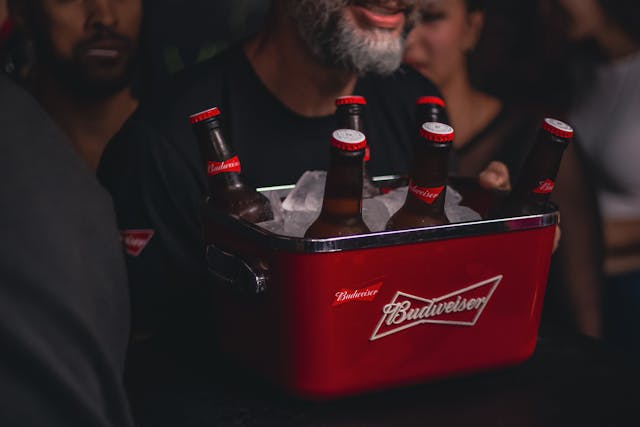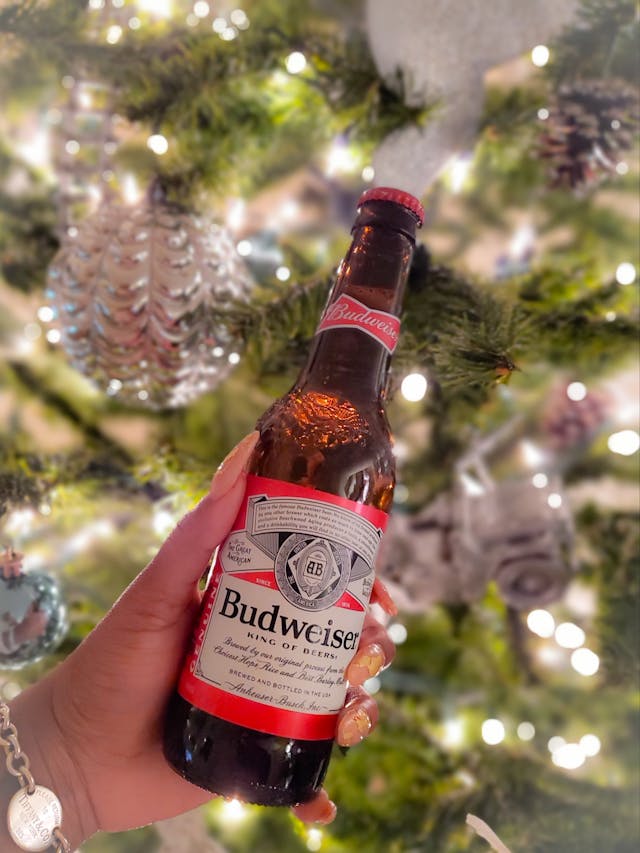Budweiser, the King of Beers, has long been a towering figure in the beverage industry. Its marketing strategy offers valuable lessons for professionals aiming to create impactful campaigns. By examining Budweiser’s history, advertising methods, and specific campaigns, we can glean insights into how this iconic brand has maintained its relevance and appeal.
The Evolution of Budweiser’s Marketing
Budweiser’s marketing journey is a testament to its ability to adapt and innovate while staying true to its core values. Established in 1876, Budweiser quickly became synonymous with American culture. Over the decades, the brand’s marketing strategy has evolved in response to changing consumer preferences and technological advancements.
Core Principles of Budweiser’s Marketing Strategy
Consistent Brand Identity
Budweiser has maintained a consistent brand identity rooted in its heritage, quality, and American values. The brand’s logo, the bowtie, and its red, white, and blue color scheme evoke a sense of tradition and patriotism. This consistency extends to its messaging, which often emphasizes themes of friendship, loyalty, and celebration.
Emotional Connection
Budweiser excels at forging emotional connections with its audience. Its advertisements often tell compelling stories that resonate on a personal level. By tapping into universal emotions such as love, friendship, and nostalgia, Budweiser creates a bond with consumers that goes beyond the product itself.

High-Quality Production
Budweiser’s advertisements are known for their high production value. Whether it’s a Super Bowl commercial or a digital campaign, the brand invests in top-tier talent and production quality. This commitment to excellence reinforces Budweiser’s premium image.
Strategic Partnerships
Budweiser leverages strategic partnerships to enhance its brand visibility and appeal. Collaborations with sports teams, music festivals, and cultural events allow Budweiser to reach diverse audiences and integrate its brand into various aspects of consumers’ lives.
Innovation and Adaptation
Despite its traditional image, Budweiser is not afraid to innovate. The brand has embraced digital marketing, social media, and experiential marketing to stay relevant in a fast-changing landscape. Budweiser’s willingness to experiment and adapt has helped it maintain its status as a market leader.
Iconic Budweiser Campaigns
“Wassup?” (1999)
The “Wassup?” campaign is a classic example of Budweiser’s ability to capture the cultural zeitgeist. Launched in 1999, the campaign featured a group of friends greeting each other with the now-iconic phrase “Wassup?” The ad became a cultural phenomenon, with the catchphrase entering everyday vernacular.
The success of “Wassup?” can be attributed to its relatability and humor. It tapped into the way people communicate with their friends, creating an instant connection with viewers. The campaign’s viral nature also demonstrated Budweiser’s understanding of word-of-mouth marketing long before the rise of social media.
Clydesdales Commercials
Budweiser’s Clydesdale horses are one of the most enduring symbols of the brand. Introduced in 1933 to celebrate the repeal of Prohibition, the Clydesdales have appeared in numerous ads over the years, often during the Super Bowl.
The Clydesdale commercials are a masterclass in storytelling. These ads typically feature heartwarming narratives that evoke emotions such as pride, nostalgia, and joy. For example, the 2013 Super Bowl ad “Brotherhood” told the touching story of a Clydesdale foal growing up and reuniting with its trainer. This ad not only showcased the Clydesdales but also reinforced Budweiser’s values of loyalty and tradition.

“America” Rebranding (2016)
In 2016, Budweiser took a bold step by temporarily rebranding its cans and bottles as “America.” This patriotic move was timed to coincide with the summer season, which included events such as the Fourth of July and the Rio Olympics.
The “America” campaign was a strategic play on national pride. By aligning itself with American values and celebrations, Budweiser strengthened its association with patriotism. The campaign generated significant buzz and media coverage, proving that a well-timed, bold move can capture public attention and drive sales.
“Lost Dog” (2015)
The “Lost Dog” Super Bowl commercial in 2015 is another example of Budweiser’s knack for emotional storytelling. The ad featured a puppy that gets lost and eventually finds its way back home with the help of the Clydesdales. The touching narrative, set to the tune of “I’m Gonna Be (500 Miles)” by The Proclaimers, struck a chord with viewers.
“Lost Dog” was a continuation of Budweiser’s “Puppy Love” ad from the previous year, which also featured a puppy and Clydesdales. This consistency in theme and storytelling helped build an emotional connection with the audience and reinforced Budweiser’s brand values.
“Support Our Heroes” (2020)
In response to the COVID-19 pandemic, Budweiser launched the “Support Our Heroes” campaign in 2020. This initiative aimed to honor frontline workers and provide financial support to those affected by the crisis. The campaign included a heartfelt ad featuring images of healthcare workers, first responders, and everyday heroes.
“Support Our Heroes” highlighted Budweiser’s commitment to social responsibility and community support. By aligning itself with a cause that resonated with people globally, Budweiser reinforced its image as a brand that cares about more than just selling beer.
Digital Marketing and Social Media
Budweiser has successfully integrated digital marketing and social media into its overall strategy. By engaging with consumers on platforms like Facebook, Twitter, Instagram, and YouTube, Budweiser reaches a broader audience and stays relevant in the digital age.
Social Media Engagement
Budweiser’s social media strategy involves regular interaction with followers, user-generated content, and timely responses to trending topics. The brand uses humor, nostalgia, and emotional appeals to engage its audience. For instance, during the 2020 Super Bowl, Budweiser revived the “Wassup?” campaign with a modern twist, featuring current cultural references and a message of social connection.
Influencer Partnerships
Influencer marketing is another key component of Budweiser’s digital strategy. By partnering with influencers who align with its brand values, Budweiser reaches new demographics and enhances its credibility. These collaborations often involve sponsored content, product placements, and exclusive events.
User-Generated Content
Budweiser encourages user-generated content to foster community engagement and brand loyalty. Campaigns like #ThisBudsForYou invite consumers to share their Budweiser moments on social media, creating a sense of belonging and participation. This strategy not only boosts brand visibility but also provides authentic content that resonates with potential customers.
Experiential Marketing
Budweiser has embraced experiential marketing to create memorable brand experiences. Events such as the Budweiser Made in America music festival and Budweiser’s involvement in sports sponsorships allow consumers to engage with the brand in a dynamic and interactive way. These experiences create lasting impressions and strengthen the emotional connection between Budweiser and its audience.
Lessons for Marketing Professionals
1. Embrace Storytelling
Budweiser’s success is largely due to its ability to tell compelling stories. Whether it’s the tale of a lost puppy or the celebration of friendship, storytelling creates an emotional connection that resonates with consumers. Marketers should focus on crafting narratives that evoke emotions and reflect the brand’s values.
2. Consistency is Key
Maintaining a consistent brand identity is crucial for long-term success. Budweiser’s consistent use of visual elements, messaging, and themes reinforces its brand image and builds trust with consumers. Marketers should ensure that all aspects of their campaigns align with the brand’s core identity.
3. Adapt and Innovate
While consistency is important, so is the ability to adapt and innovate. Budweiser has successfully navigated changes in consumer preferences and technological advancements by embracing new marketing channels and techniques. Marketers should stay informed about industry trends and be willing to experiment with new ideas.
4. Leverage Partnerships
Strategic partnerships can enhance brand visibility and reach. Budweiser’s collaborations with sports teams, music festivals, and influencers have allowed it to connect with diverse audiences. Marketers should seek out partnerships that align with their brand values and target demographics.
5. Focus on Quality
High-quality production is a hallmark of Budweiser’s advertisements. Investing in top-tier talent and production quality can elevate a brand’s image and make its campaigns more impactful. Marketers should prioritize quality in their content creation to leave a lasting impression on consumers.
6. Engage with Digital Platforms
In today’s digital landscape, engaging with consumers on social media and other digital platforms is essential. Budweiser’s active presence on social media and its use of user-generated content demonstrate the importance of digital engagement. Marketers should leverage social media to interact with their audience, share compelling content, and stay relevant.
7. Align with Social Causes
Budweiser’s “Support Our Heroes” campaign shows the power of aligning with social causes. Supporting meaningful causes not only enhances a brand’s reputation but also fosters a deeper connection with consumers. Marketers should identify causes that resonate with their audience and align with their brand values.
Budweiser’s marketing strategy is a blueprint for success in the beverage industry and beyond. By maintaining a consistent brand identity, telling compelling stories, and embracing innovation, Budweiser has built a lasting legacy. Marketing professionals can learn valuable lessons from Budweiser’s campaigns, partnerships, and digital engagement strategies. By applying these principles, marketers can create impactful campaigns that resonate with their audience and drive long-term success.

